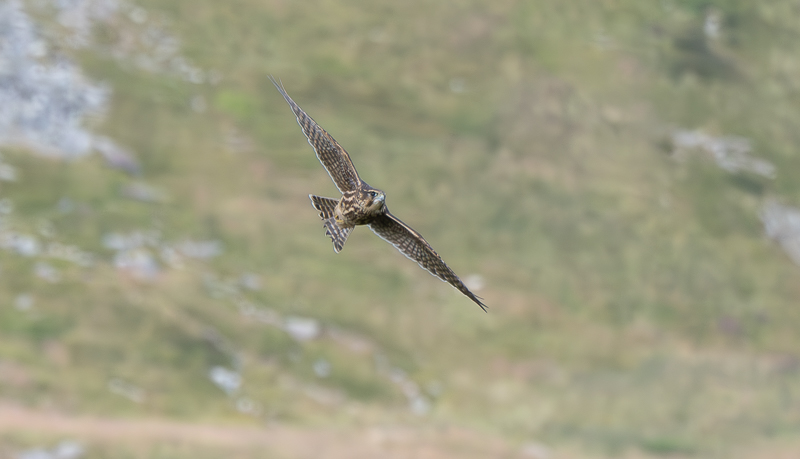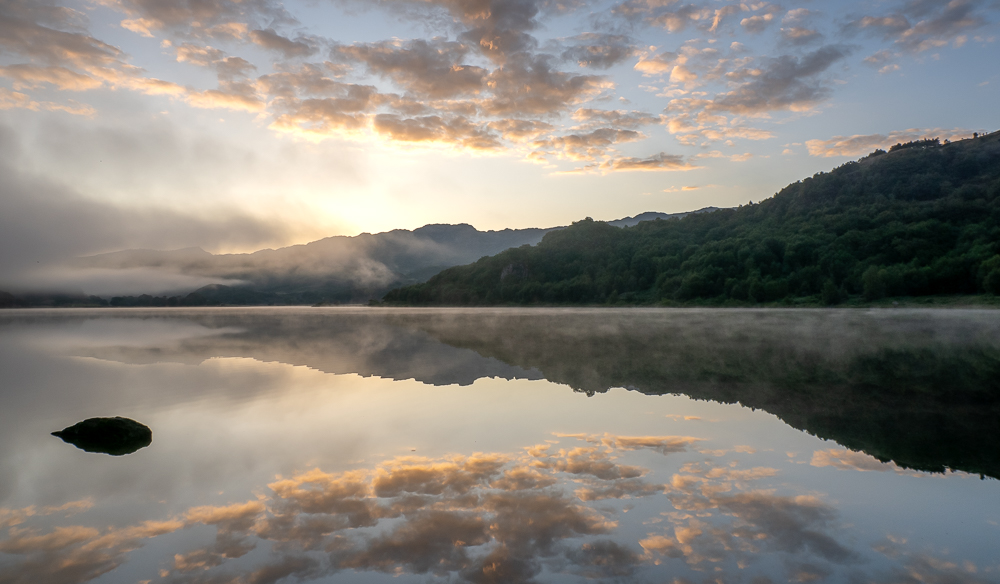
It’s usually easier to talk about the weather in the UK than just about anything else. There always seems to be something to say about it. So after the difficult subject I tackled last time, it’s time for some light relief.
It was inevitable that there would be a down side to all the glorious sunshine we had in June (not that relentless blue skies are the photographer’s friend). A cool and changeable July followed, but changeable can be good for the photographer, if it involves cloud, rain and bright sunny days. That for me would be the definition of changeable. July consisted mainly of rain followed by cloud and then more rain. At least there was a chance – dictated by the law of averages – that August would be better. Here we are on the 22nd and how true has that been? Not true at all. At the beginning of the month, the forecasters teased us with talk of an improvement by mid-month, and yes, this time last week warmth and sunshine made an appearance. It lasted less than two days.
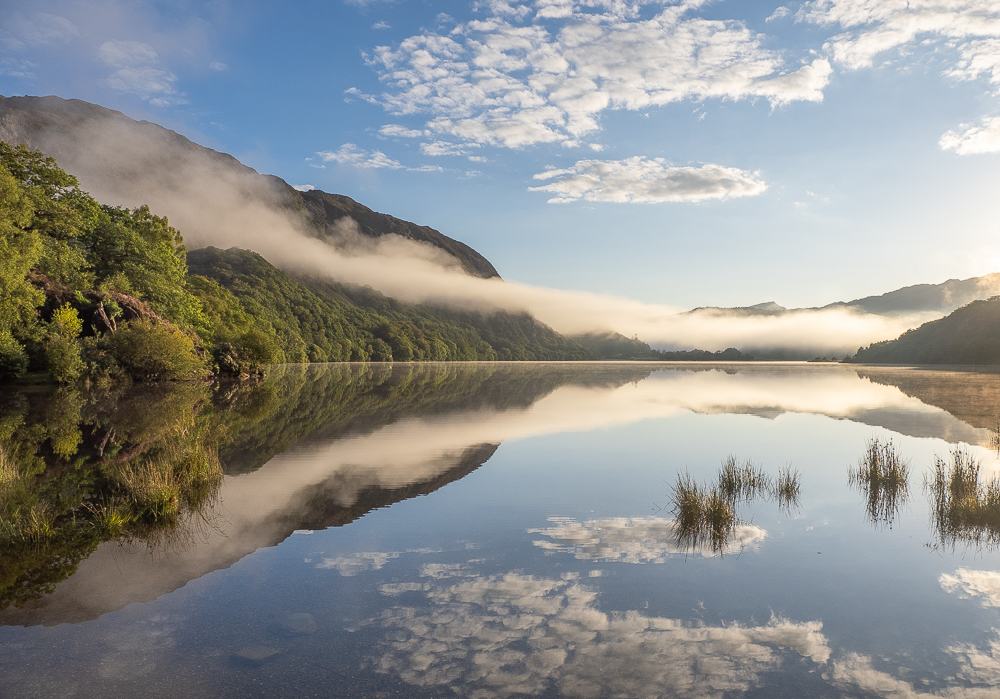
I made a decision to “go for it” even though I knew my trip would only be a short one. I headed up to north Wales for some landscape photography. On these trips I nearly always end up at Llyn Dinas (near Beddgelert) but this time I made the decision to search out some new locations. And where did I end up? You’ve guessed it….. Llyn Dinas. And while I was there I realised why: it is one of the very best locations in Wales for the landscaper – and for several reasons. The lake and its surroundings are perhaps as close to “the sublime” as it is possible to find in Wales. More practically, it is very close to the road – always handy for dawn visits; there are fairly secluded parking areas (for the camper van) nearby- ditto; and surrounded by mountains, its waters have a tendency to be still early on sunny mornings; and finally, it is also prone to valley fog. Last Thursday was one such morning.
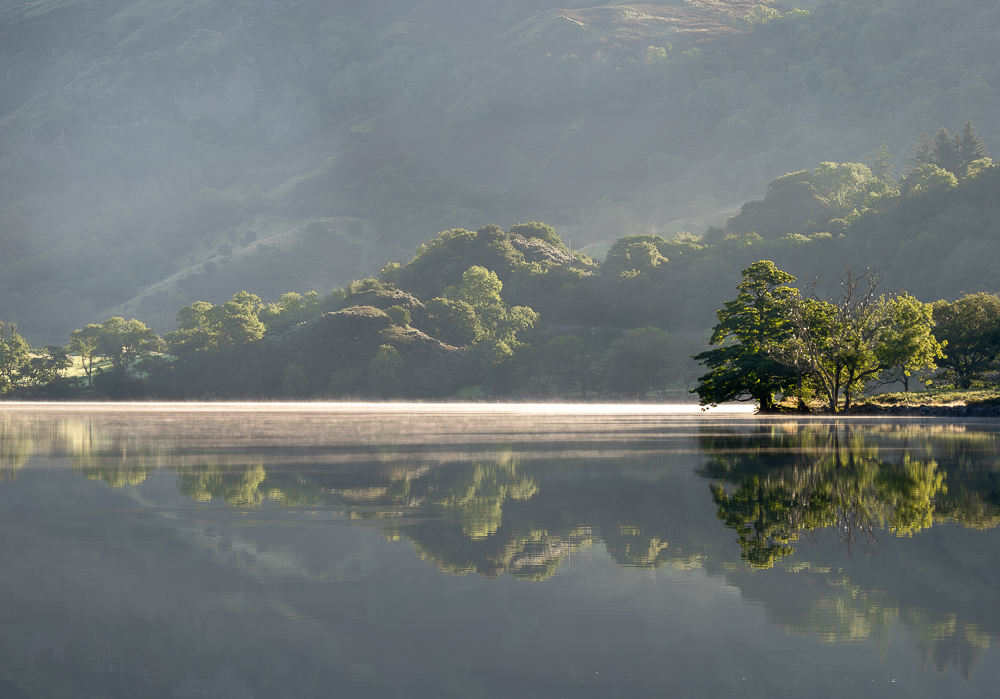
The top photo was taken as soon as I arrived and shows the lake just post-sunrise. The second shows Llyn Dinas at its idyllic best, about three-quarters of an hour later. The sense of calm that the image suggests is slightly misleading, however, as some voracious midges were making life very difficult for the photographer and it felt far from idyllic! I feel that the warmth from the sunlight on the trees adds an extra dimension that is missing in the earlier photo. After a session here I motored the short distance up to Llyn Gwynant by which time the fog was thinning and lifting quickly. I think some lake-side trees have been removed here, opening up a new vista across the water. I took another series of images with a very different feel, including the third one above.
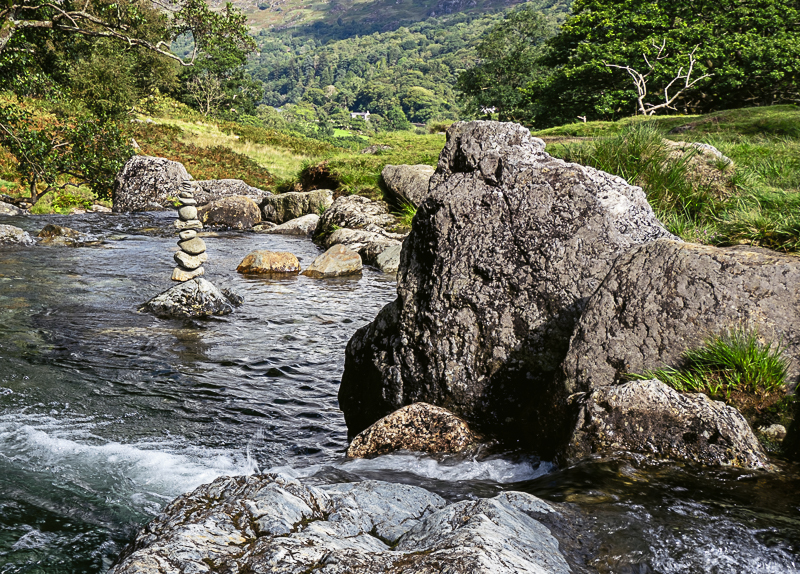
That was almost it for the day, really. I’ve often wondered what other landscape photographers do during the main part of a summer day. So many are only active during the “golden hour” around dawn and dusk. How do they wile away the many hours with the sun high in the sky? Apart from catching up on sleep, that is….. . During the afternoon I walked up the lower section of the Watkin Path into Cwm Llan. It was more of a recce really, but I did come across a charming little “Andy Goldsworthy” style sculpture. Unlike a Goldsworthy, I suspect this one will have involved quantities of industrial strength adhesive to maintain it’s structure. Otherwise the walk was mainly an exercise in avoiding families with noisy children!
To read more Tales from Wild Wales as they are published, please click the Follow button.
